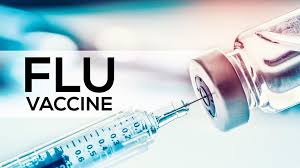
Electronic Nudges Boost Flu Vaccination Rates Among Patients with Chronic Diseases: Study
A new study published in the Journal of the American Medical Association (JAMA) reveals that electronically delivered letter nudges significantly increase flu vaccination rates among adults aged 18 to 64 with chronic diseases. The research, led by Dr. Niklas Dyrby Johansen of Copenhagen University Hospital, highlights the potential of behaviorally informed communication to improve public health outcomes.
The randomised clinical implementation trial involved nearly 300,000 participants, who were divided into two groups: one receiving usual care with no additional intervention, and the other receiving one of six different electronic letters designed to encourage flu vaccination. These letters, based on behavioral science principles, were aimed at prompting recipients to get vaccinated.
The study found that vaccination rates were notably higher among those who received the electronic nudges. Specifically, 39.6 percent of individuals who received a letter opted for the flu vaccine, compared to only 27.9 percent of those who received no letter. The most effective letter, which included a follow-up reminder sent 10 days after the initial message, resulted in a vaccination rate of 41.8 percent. Another successful approach emphasized the cardiovascular benefits of vaccination, yielding a rate of 39.8 percent.
"The results suggest that simple, scalable, and cost-efficient electronic letter strategies may be utilized to encourage positive health behavior at a population level," the authors noted.
The findings could have significant implications for public health strategies, especially for individuals with chronic conditions who are at higher risk for severe influenza complications. Despite the promising results, the study also disclosed that several authors have ties to the pharmaceutical industry, highlighting the need for careful interpretation of the findings.
This research underscores the potential for low-cost interventions, such as targeted electronic communications, to make a significant impact on vaccination rates and, ultimately, on public health.